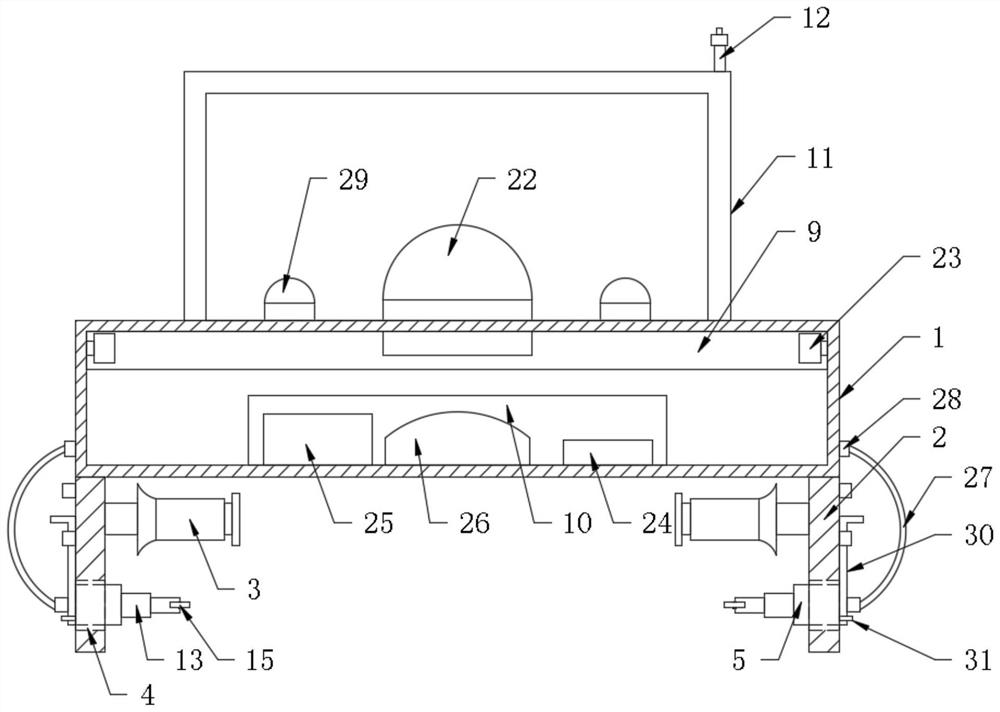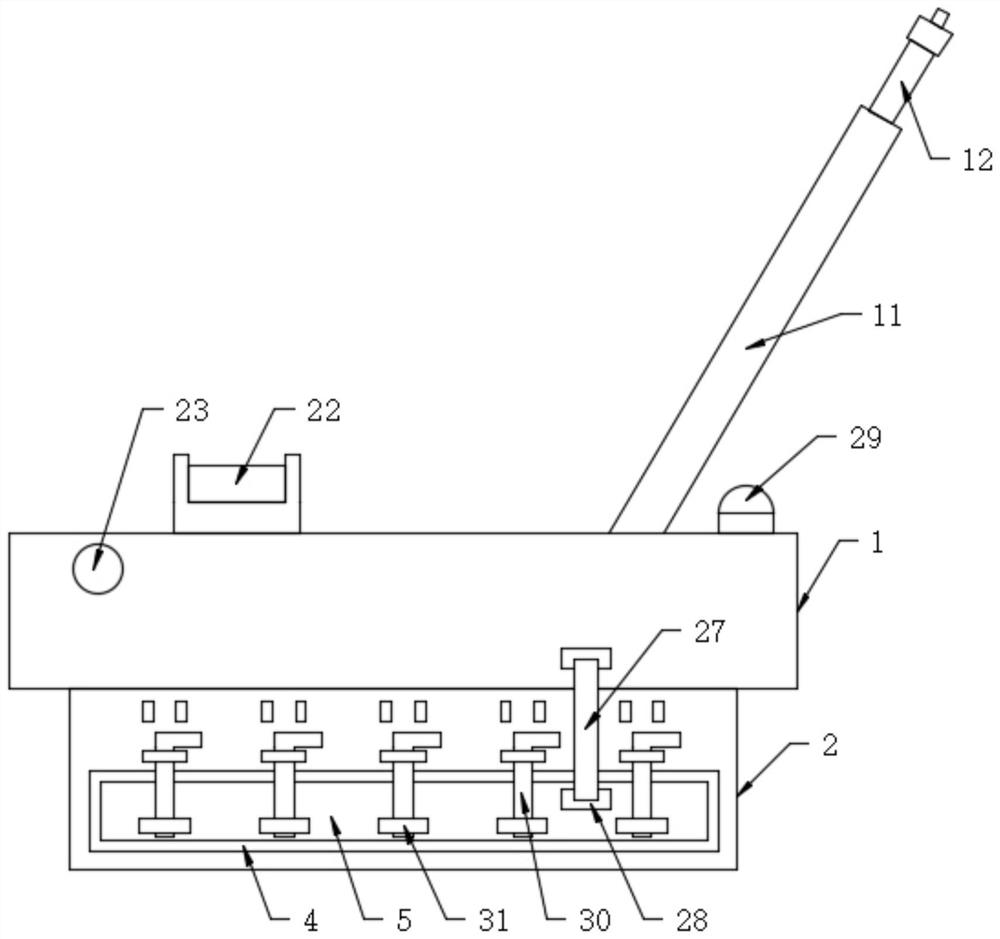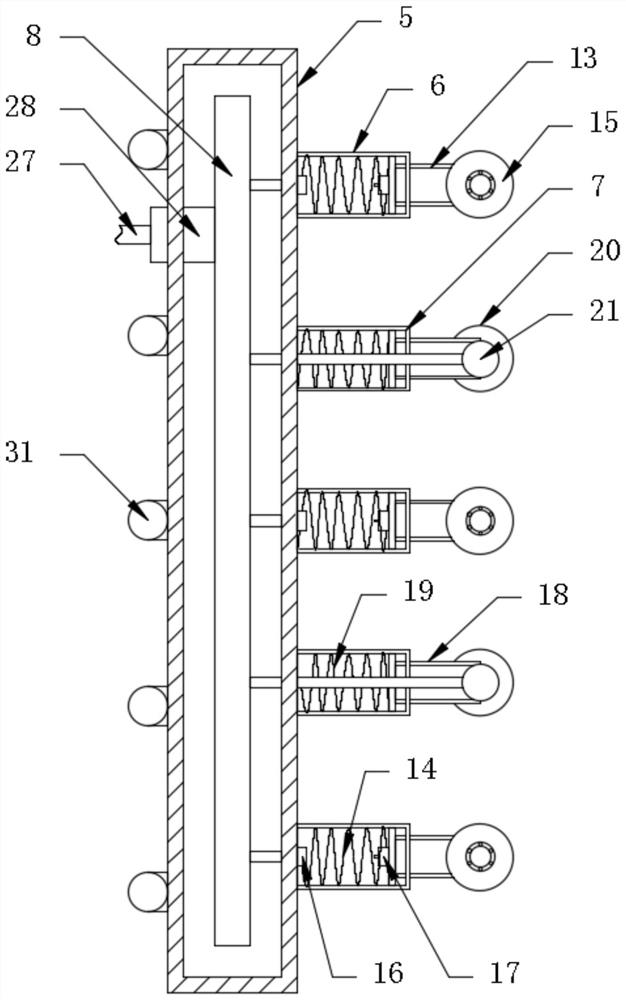Device for continuously scanning and detecting railway
A scanning detection, railway technology, applied in the direction of measuring devices, railway vehicle shape measuring devices, railway car body parts, etc., can solve troubles and other problems
- Summary
- Abstract
- Description
- Claims
- Application Information
AI Technical Summary
Problems solved by technology
Method used
Image
Examples
Embodiment Construction
[0027] The following will clearly and completely describe the technical solutions in the embodiments of the present invention with reference to the accompanying drawings in the embodiments of the present invention. Obviously, the described embodiments are only some, not all, embodiments of the present invention. Based on the embodiments of the present invention, all other embodiments obtained by persons of ordinary skill in the art without making creative efforts belong to the protection scope of the present invention.
[0028] see Figure 1-5 , the present invention provides a technical solution: a device for continuous scanning and detection of railways, comprising a square main body 1, connecting plates 2 are fixedly arranged on both sides of the bottom end of the main body 1, and the connecting plate 2 is close to a part inside the main body 1. A roller 3 is installed on the side through a pillar sleeve, and the roller 3 is movably arranged under the main body 1. The botto...
PUM
 Login to View More
Login to View More Abstract
Description
Claims
Application Information
 Login to View More
Login to View More - R&D
- Intellectual Property
- Life Sciences
- Materials
- Tech Scout
- Unparalleled Data Quality
- Higher Quality Content
- 60% Fewer Hallucinations
Browse by: Latest US Patents, China's latest patents, Technical Efficacy Thesaurus, Application Domain, Technology Topic, Popular Technical Reports.
© 2025 PatSnap. All rights reserved.Legal|Privacy policy|Modern Slavery Act Transparency Statement|Sitemap|About US| Contact US: help@patsnap.com



